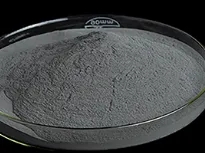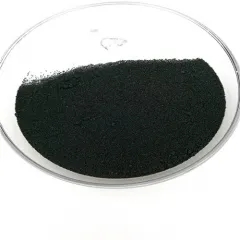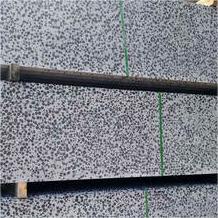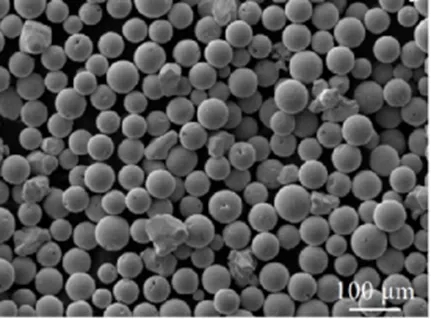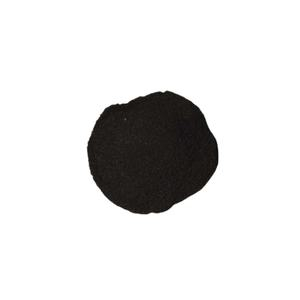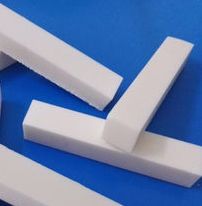Intro to Titanium Disilicide: A Versatile Refractory Substance for Advanced Technologies
Titanium disilicide (TiSi ₂) has actually become a crucial material in modern microelectronics, high-temperature structural applications, and thermoelectric energy conversion as a result of its distinct combination of physical, electrical, and thermal buildings. As a refractory steel silicide, TiSi ₂ shows high melting temperature level (~ 1620 ° C), excellent electrical conductivity, and good oxidation resistance at elevated temperatures. These qualities make it a crucial element in semiconductor gadget construction, particularly in the development of low-resistance calls and interconnects. As technical needs promote faster, smaller sized, and more reliable systems, titanium disilicide remains to play a calculated duty across numerous high-performance sectors.
(Titanium Disilicide Powder)
Structural and Electronic Properties of Titanium Disilicide
Titanium disilicide takes shape in 2 primary stages– C49 and C54– with distinctive architectural and electronic habits that influence its performance in semiconductor applications. The high-temperature C54 phase is specifically preferable because of its lower electrical resistivity (~ 15– 20 μΩ · centimeters), making it perfect for use in silicided gateway electrodes and source/drain get in touches with in CMOS tools. Its compatibility with silicon processing strategies allows for smooth assimilation right into existing construction circulations. Additionally, TiSi two shows moderate thermal development, minimizing mechanical tension during thermal cycling in incorporated circuits and boosting long-lasting integrity under functional conditions.
Function in Semiconductor Manufacturing and Integrated Circuit Layout
One of the most considerable applications of titanium disilicide depends on the area of semiconductor manufacturing, where it functions as a vital material for salicide (self-aligned silicide) processes. In this context, TiSi two is uniquely based on polysilicon gates and silicon substratums to reduce call resistance without jeopardizing tool miniaturization. It plays an important role in sub-micron CMOS technology by making it possible for faster switching rates and lower power intake. In spite of obstacles associated with stage makeover and load at heats, recurring research study focuses on alloying methods and procedure optimization to boost stability and efficiency in next-generation nanoscale transistors.
High-Temperature Architectural and Safety Coating Applications
Past microelectronics, titanium disilicide shows remarkable capacity in high-temperature environments, particularly as a protective coating for aerospace and commercial parts. Its high melting point, oxidation resistance approximately 800– 1000 ° C, and moderate solidity make it appropriate for thermal barrier coatings (TBCs) and wear-resistant layers in turbine blades, burning chambers, and exhaust systems. When integrated with other silicides or ceramics in composite materials, TiSi ₂ improves both thermal shock resistance and mechanical honesty. These qualities are significantly valuable in defense, space expedition, and progressed propulsion innovations where severe performance is called for.
Thermoelectric and Energy Conversion Capabilities
Recent studies have highlighted titanium disilicide’s promising thermoelectric properties, placing it as a prospect product for waste heat healing and solid-state energy conversion. TiSi ₂ displays a fairly high Seebeck coefficient and moderate thermal conductivity, which, when maximized through nanostructuring or doping, can enhance its thermoelectric performance (ZT value). This opens new methods for its use in power generation modules, wearable electronic devices, and sensor networks where small, durable, and self-powered solutions are needed. Scientists are likewise exploring hybrid structures integrating TiSi two with various other silicides or carbon-based products to additionally boost power harvesting abilities.
Synthesis Techniques and Processing Challenges
Producing high-grade titanium disilicide requires specific control over synthesis parameters, including stoichiometry, stage pureness, and microstructural uniformity. Common methods include straight reaction of titanium and silicon powders, sputtering, chemical vapor deposition (CVD), and reactive diffusion in thin-film systems. Nonetheless, attaining phase-selective development continues to be a difficulty, especially in thin-film applications where the metastable C49 phase tends to form preferentially. Developments in fast thermal annealing (RTA), laser-assisted processing, and atomic layer deposition (ALD) are being explored to overcome these restrictions and enable scalable, reproducible construction of TiSi two-based elements.
Market Trends and Industrial Adoption Throughout Global Sectors
( Titanium Disilicide Powder)
The worldwide market for titanium disilicide is broadening, driven by need from the semiconductor market, aerospace market, and emerging thermoelectric applications. The United States And Canada and Asia-Pacific lead in adoption, with major semiconductor producers integrating TiSi ₂ into sophisticated reasoning and memory tools. Meanwhile, the aerospace and protection fields are buying silicide-based compounds for high-temperature structural applications. Although different products such as cobalt and nickel silicides are gaining grip in some segments, titanium disilicide stays preferred in high-reliability and high-temperature niches. Strategic collaborations in between product distributors, foundries, and academic institutions are speeding up item advancement and business release.
Environmental Factors To Consider and Future Study Directions
Regardless of its advantages, titanium disilicide faces scrutiny relating to sustainability, recyclability, and environmental effect. While TiSi ₂ itself is chemically secure and non-toxic, its manufacturing includes energy-intensive processes and uncommon basic materials. Initiatives are underway to develop greener synthesis routes utilizing recycled titanium sources and silicon-rich commercial byproducts. Furthermore, scientists are checking out biodegradable options and encapsulation strategies to decrease lifecycle dangers. Looking ahead, the integration of TiSi ₂ with adaptable substratums, photonic tools, and AI-driven products layout platforms will likely redefine its application extent in future state-of-the-art systems.
The Road Ahead: Combination with Smart Electronic Devices and Next-Generation Devices
As microelectronics remain to evolve towards heterogeneous combination, flexible computing, and ingrained noticing, titanium disilicide is anticipated to adjust appropriately. Developments in 3D packaging, wafer-level interconnects, and photonic-electronic co-integration may broaden its usage beyond traditional transistor applications. In addition, the convergence of TiSi two with expert system devices for predictive modeling and process optimization could increase development cycles and lower R&D costs. With continued financial investment in material science and procedure engineering, titanium disilicide will certainly stay a cornerstone product for high-performance electronic devices and sustainable power technologies in the years to find.
Supplier
RBOSCHCO is a trusted global chemical material supplier & manufacturer with over 12 years experience in providing super high-quality chemicals and Nanomaterials. The company export to many countries, such as USA, Canada, Europe, UAE, South Africa,Tanzania,Kenya,Egypt,Nigeria,Cameroon,Uganda,Turkey,Mexico,Azerbaijan,Belgium,Cyprus,Czech Republic, Brazil, Chile, Argentina, Dubai, Japan, Korea, Vietnam, Thailand, Malaysia, Indonesia, Australia,Germany, France, Italy, Portugal etc. As a leading nanotechnology development manufacturer, RBOSCHCO dominates the market. Our professional work team provides perfect solutions to help improve the efficiency of various industries, create value, and easily cope with various challenges. If you are looking for 1 gram of titanium price, please send an email to: sales1@rboschco.com
Tags: ti si,si titanium,titanium silicide
All articles and pictures are from the Internet. If there are any copyright issues, please contact us in time to delete.
Inquiry us

